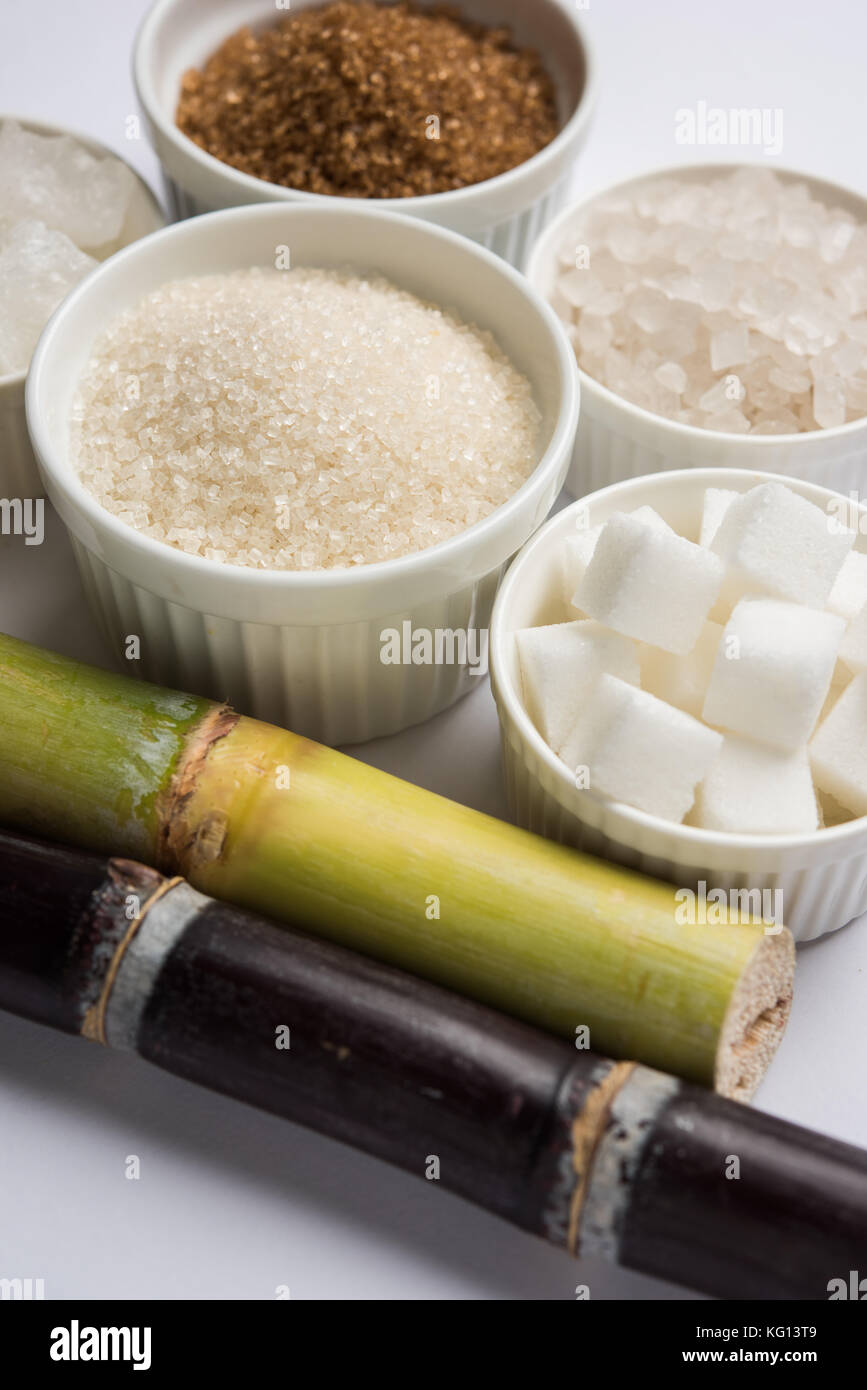A Deep Study Sugar Cane: Insights on Production, Supplies, and Product Development
Sugar cane plays a crucial role in farming, underpinning economic situations in tropical areas. Its growing includes intricate processes affected by numerous environmental aspects. However, farmers encounter considerable difficulties, consisting of environment change and market variations. Developments in item development are arising in action to progressing customer demands. Understanding these dynamics is essential for understanding the future of this important plant and its influence on global markets. What exists in advance for sugar cane and its myriad applications?
The Value of Sugar Cane in Global Agriculture
Sugar cane serves as a necessary plant in global farming, underpinning economies and food systems in many tropical regions. This functional plant is mostly cultivated for its high sucrose content, which is fine-tuned right into sugar, an essential component in many foodstuff. Beyond sweetening, sugar cane is also essential for creating biofuels, especially ethanol, contributing to power sustainability.The financial significance of sugar cane encompasses employment, giving source of incomes for millions of farmers and workers in processing centers. In a number of countries, sugar cane cultivation and processing stand for significant portions of farming GDP, affecting trade balances and regional development.Additionally, sugar cane's versatility to various climates improves its importance as a crop, making sure constant supply in international markets. Its byproducts, including molasses and bagasse, better expand its energy, making it a crucial component in food, energy, and industry. On the whole, sugar cane remains a cornerstone of agricultural performance worldwide.
Growing Processes: From Growing to Harvest
Cultivating sugar cane involves a collection of well-defined processes that guarantee suitable growth and yield. The cultivation starts with land preparation, where the dirt is tilled to protect optimal aeration and drainage. Following this, seed cane, which consists of fully grown stalks, is picked and reduced right into segments (sugar cane products). These sections are after that planted in furrows, making sure proper spacing to permit sunshine and nutrient access.Once grown, irrigation systems are utilized to keep appropriate dampness levels, as sugar cane flourishes in humid problems. Weeding and pest monitoring are vital during the growing period to reduce competition for sources. Nutrient application, consisting of plant foods, supports durable development. As the plants develop, checking for illness and bugs continues.Harvesting usually takes place 10 to 24 months post-planting, depending on the range. The walking canes are reduced close to the ground, making certain minimal waste, and are rapidly transported for refining to preserve sugar high quality
Geographical Distribution of Sugar Cane Production
The geographical circulation of sugar cane production is largely formed by specific climate and dirt needs. Major creating countries, such as Brazil, India, and China, take advantage of tropical and subtropical climates that support the plant's development. Comprehending these variables offers insight into the global landscape of sugar cane growing.
Significant Making Countries
Although sugar cane is grown in various areas worldwide, certain nations control production as a result of favorable environments and agricultural methods. Brazil leads the global market, accounting for approximately one-third of complete production, many thanks to its considerable vineyards and advanced cultivation methods. India complies with as a considerable manufacturer, gaining from both positive weather and a large domestic market. China and Thailand also rate among the leading producers, with well-established facilities supporting their sugar sectors. Other notable contributors consist of the USA, Mexico, and Australia, each leveraging their distinct farming systems to boost outcome. These countries play a vital function in the sugar cane supply chain, affecting international prices and accessibility
Climate and Dirt Needs
Perfect climate and soil problems are critical for successful sugar cane production. Sugar cane flourishes in exotic and subtropical regions, needing cozy temperature levels between 20 ° C and 30 ° C (68 ° F to 86 ° F) These plants need plentiful sunlight and rains, preferably in between 1,500 to 2,500 millimeters every year, to ensure peak growth. The dirt should be well-drained, fertile, and rich in organic issue, with a pH level ideally in between 5.5 and 8.5. Sandy loam or clay loam soils are especially favorable to sugar cane cultivation, providing necessary nutrients and drain. Geographical distribution is greatly affected by these aspects, with major production areas located in Brazil, India, and China, where environmental problems align with the plant's demands for development and return.

Challenges Dealt With by Sugar Cane Growers
Sugar cane farmers come across considerable challenges that affect their resources. Climate change presents navigate here unpredictable weather patterns, influencing plant return and high quality. In addition, market rate volatility creates economic unpredictability, making complex long-lasting preparation for these agricultural producers.
Environment Change Impacts

Exactly how do climate adjustment influences affect the feasibility of sugar cane farming? Rising temperatures and irregular weather condition patterns notably challenge sugar cane growers. Boosted warmth can result in reduced yields, as the plants battle to thrive in severe More Bonuses problems. In addition, modified rainfall patterns cause either droughts or excessive flooding, both detrimental to plant health. Insects and conditions are likely to multiply in warmer environments, even more threatening production. In addition, dirt deterioration and salinization because of rising water level can diminish cultivable land. These weather adjustments force growers to adjust their methods, frequently needing financial investment in brand-new technologies and resilient crop varieties. Ultimately, the sustainability of sugar cane farming depends upon addressing these environment tests effectively.

Market Rate Volatility
Market value volatility offers significant challenges for sugar cane growers, affecting their monetary stability and preparation. Changes in market costs, driven by elements such as global supply and demand, climate condition, and federal government plans, develop uncertainty for manufacturers. This changability makes it difficult for farmers to forecast incomes and manage operating budget successfully. Furthermore, when prices go down unexpectedly, several farmers may struggle to cover production prices, leading to prospective financial distress. To mitigate these dangers, some cultivators turn to contracts or hedging approaches, yet these services might not be accessible to all. Consequently, market value volatility continues to be a persistent concern, affecting the overall sustainability and profitability of sugar cane farming.
Understanding the Sugar Cane Supply Chain

Market Patterns Affecting Sugar Cane Rates
The dynamics of sugar cane costs are affected by a selection of market trends that show broader financial conditions and customer habits. Global demand for sugar and sugar-related products plays a vital duty, with boosting interest in natural and sustainably sourced products driving prices higher. In addition, variations in oil rates impact the expense of production and transportation, more influencing market rates. Weather patterns are one more substantial variable; adverse conditions can result in reduced returns and boosted costs. Trade plans, tariffs, and global arrangements likewise form the market landscape, impacting supply chains and schedule. Money exchange prices can make complex international trade, affecting rates for both merchants and importers. Shifts in consumer choices toward much healthier choices might alter need patterns, developing a ripple impact on sugar cane rates. sugar cane products. Therefore, understanding these interconnected trends is vital for stakeholders in the sugar sector
Technologies in Sugar Cane Item Growth
Many developments in sugar cane item advancement are reshaping the industry and broadening its applications. Scientists are exploring alternate uses beyond conventional sugar, consisting of biofuels, eco-friendly plastics, and health supplements. Advances in chemical processing techniques have enhanced the removal of useful substances such as anti-oxidants and vitamins from sugar cane, advertising its use in functional foods.Additionally, the advancement of genetically customized sugar cane varieties intends to improve return and resistance to parasites, while also boosting the dietary account of the plant. Innovations in fermentation procedures have actually brought about the production of top notch liquors stemmed from sugar cane, attracting a growing market for craft spirits.Moreover, lasting methods in farming and processing are obtaining grip, with a concentrate on minimizing environmental influences. These developments not only create new market opportunities however likewise promote a more sustainable approach to sugar cane production, lining up with worldwide trends towards environment-friendly products.
Regularly Asked Concerns
What Are the Ecological Effects of Sugar Cane Farming?
The ecological effects of sugar cane farming consist of logging, loss of biodiversity, water pollution from fertilizers and chemicals, dirt destruction, and greenhouse gas emissions, all of which substantially contribute to eco-friendly discrepancies and climate change.
Exactly How Does Sugar Cane Growing Affect Resident Economies?
Sugar cane cultivation substantially influences regional economic climates by producing jobs, promoting agricultural sectors, and generating revenue for farmers. It can also lead to financial dependence and variations based on market demands and environmental problems.
What Are the Main Pests and Diseases Affecting Sugar Cane?
The primary pests influencing sugar cane include the sugarcane borer and aphids. Diseases such as red rot and smut substantially influence return. Farmers must carry out integrated bug management techniques to alleviate these dangers successfully.
Exactly How Is Sugar Cane Processed Into Different Products?
Sugar cane handling involves squashing the stalks to draw out juice, followed by explanation, evaporation, and condensation. This process returns raw sugar, molasses, and ethanol, each offering distinctive purposes in different markets, from food to energy.
What Are the Nutritional Aspects of Sugar Cane?
The dietary elements of sugar cane include crucial vitamins and minerals, especially B vitamins, calcium, and iron. It likewise consists of fiber, though primarily made up of sucrose, which supplies energy yet lacks significant nutrients.